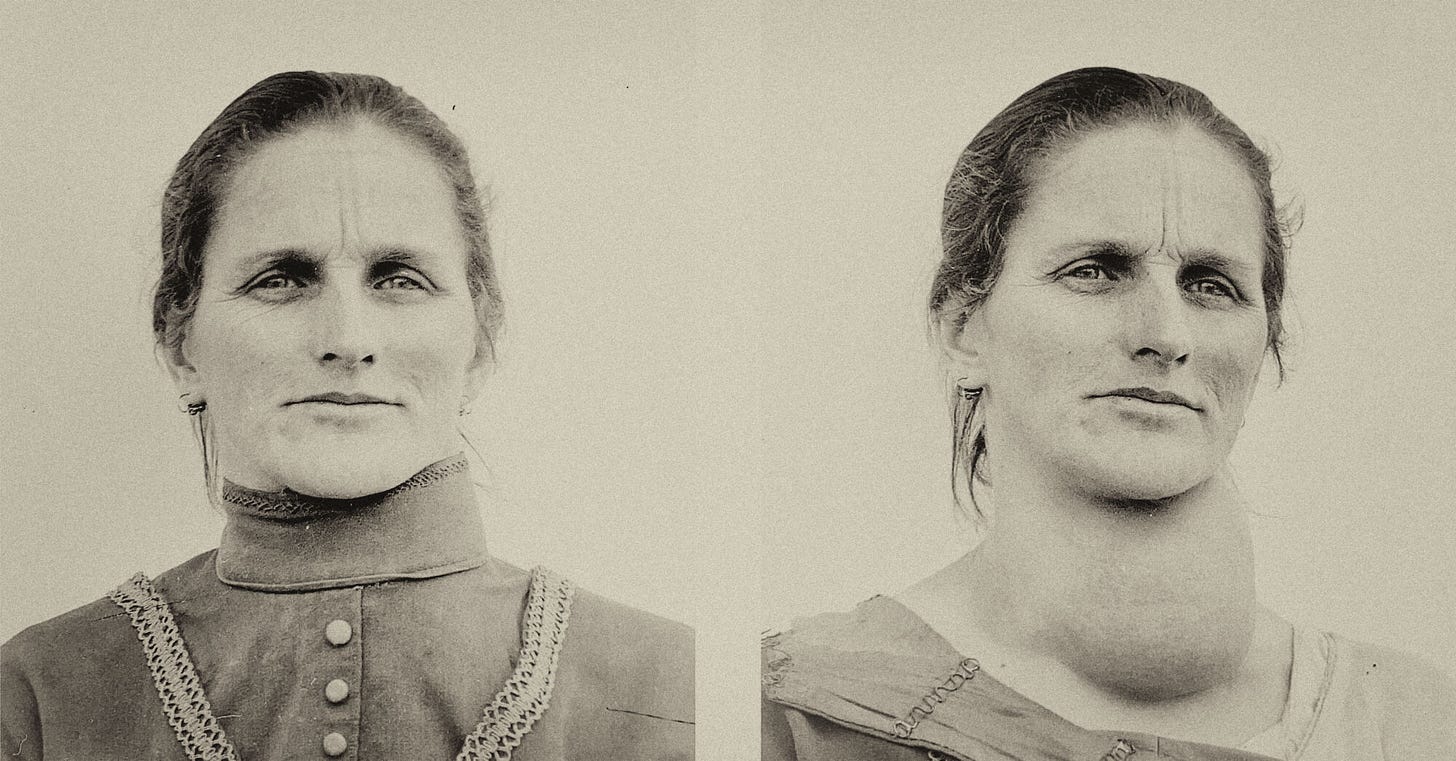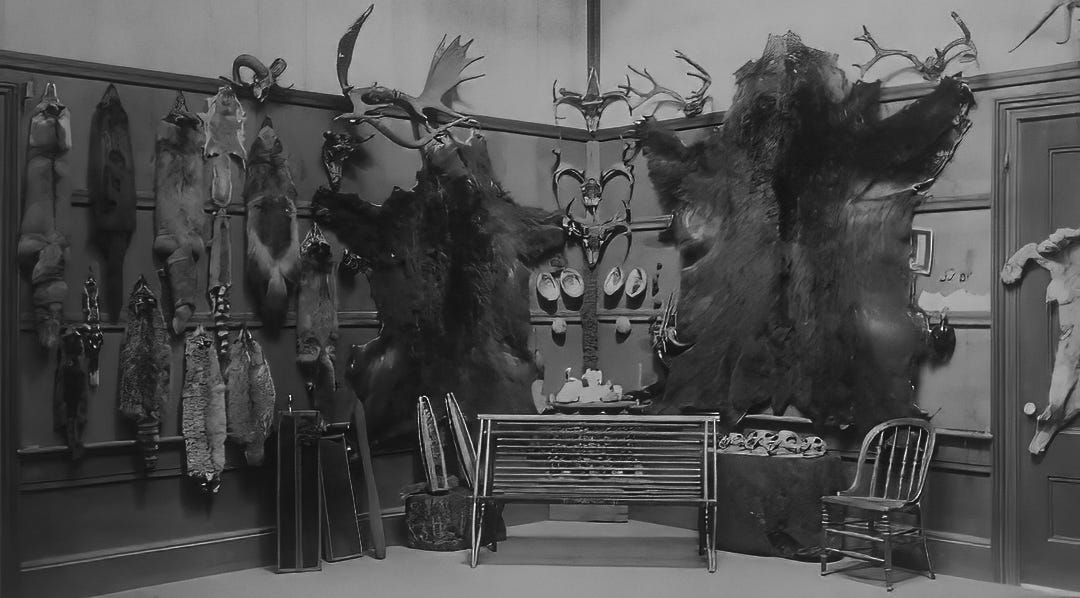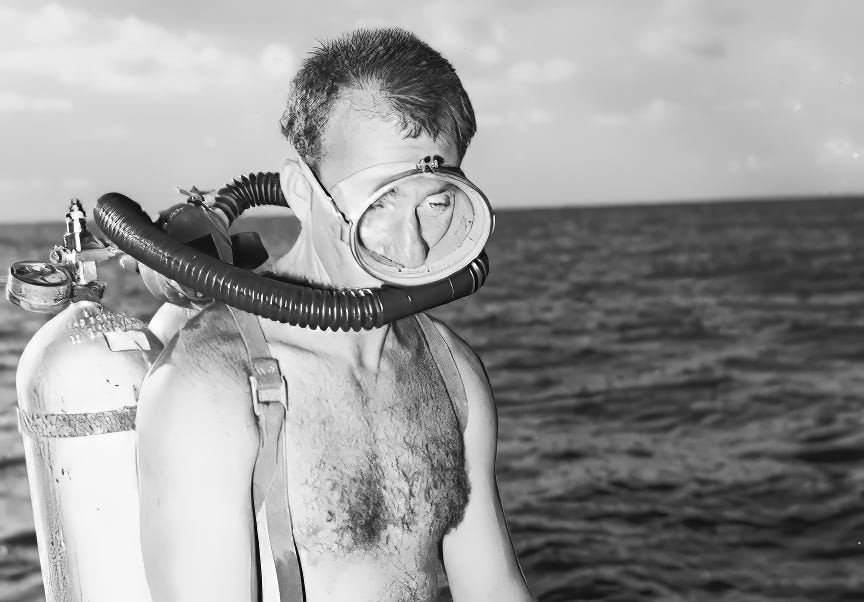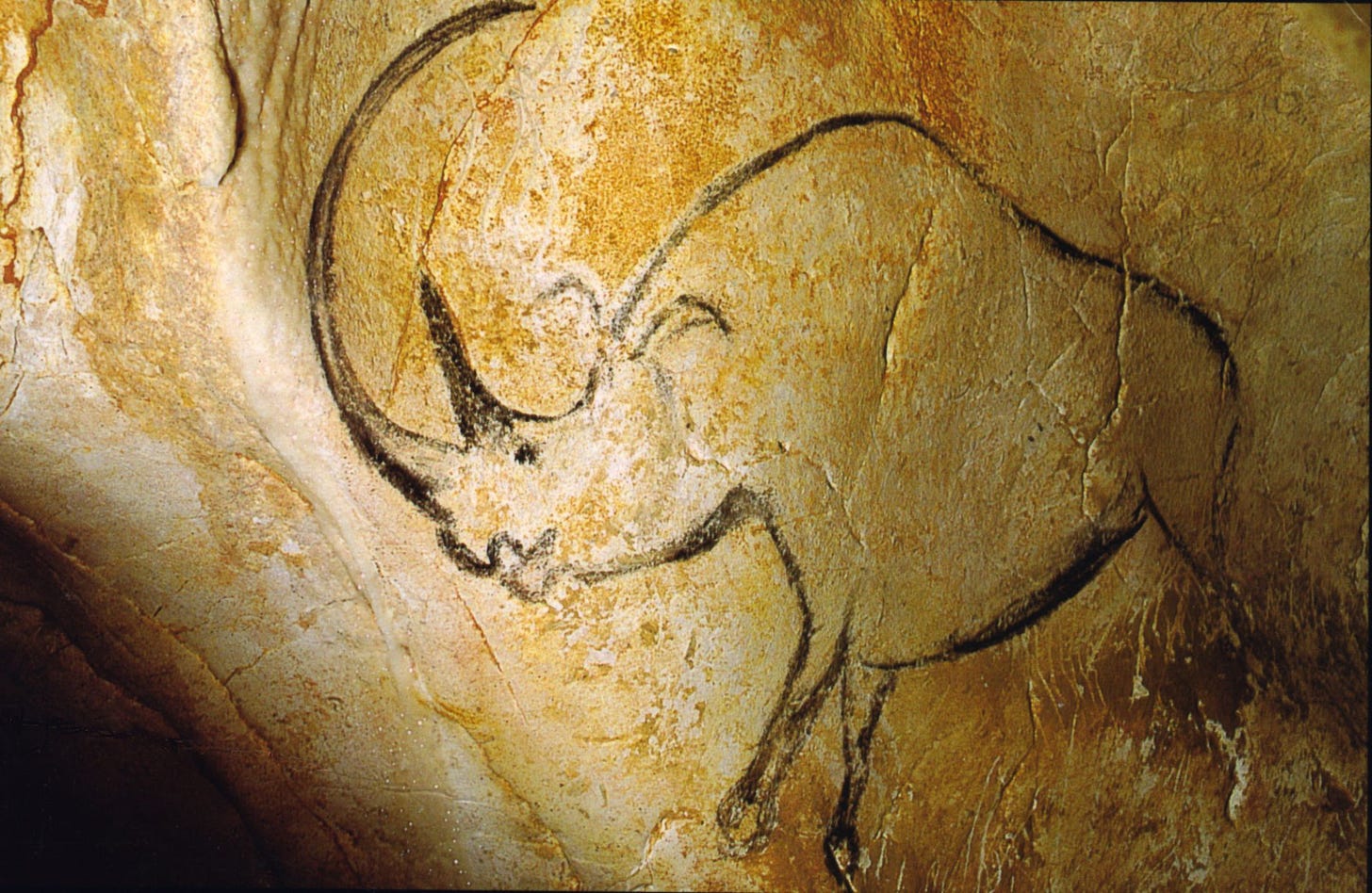Wild Things Science
A collection of stories on evolution, medicine, geophysics, language, and more.
NATURAL DISASTERS
The real danger from the deep
By Kerry Tremain
WHEN WE MOVED to Washington’s Olympic Peninsula in 2015, I was aware of the Cascadia Subduction Zone—the fault that runs from Cape Mendocino to Vancouver Island. I had interviewed oceanographers at the University of Washington who study the fault. I had researched and written about earthquake-induced tsunamis. That same year, The New Yorker published an article by Kathryn Schultz about a future Cascadia earthquake and tsunami entitled “The Really Big One” with this memorable quote from a FEMA official: “Our operating assumption is that everything west of Interstate 5 will be toast.” We made sure to buy a house on a hill.
The deadliest tsunami in world history struck less than twenty years ago, on the day after Christmas in 2004, Boxing Day. At 7:59 a.m. local time, an eight hundred and ten-mile border between two tectonic plates ruptured off the coast of Indonesia, generating an estimated 9.1 magnitude earthquake. The Andaman earthquake unleashed the energy equivalent of fifteen hundred Hiroshima bombs and sent waves traveling up to five hundred miles per hour across the Indian Ocean. The nations and people in its path were unprepared. Here in the eastern Pacific, thirty-nine DART buoys—Deep-ocean Assessment and Reporting of Tsunami stations—are strategically placed in the ocean to warn us before disaster strikes. At the time, there were none in the Indian Ocean. And during the hours that the tsunami swept towards India, Thailand, and Sri Lanka, no communication systems were in place to alert residents along the coast or to direct them to safe ground. Between 225,000 and 300,000 people lost their lives.
In March 2011, I interviewed an American scientist who had survived the Andaman tsunami. Nine days before the interview, the Tohoku earthquake and tsunami, known for destroying the Fukishima Nuclear Power Plant, had overwhelmed Japan, killing more than eighteen thousand people. The Tohoku tsunami subsequently crossed the Pacific, drowning one person in Crescent City, California, and destroying structures along the American west coast. In Santa Cruz, where it wiped out the back harbor, I watched federal workers gingerly raising the sunken boats to avoid releasing oil or onboard toxics into the water.
A Cascadia earthquake would likely reach a 9.0 magnitude or more—nothing like the earthquakes I’d experienced in California, including the Loma Prieta in 1989, which caused sections of the Nimitz Freeway and Bay Bridge to collapse. California’s famous San Andreas Fault consists of two parallel plates that slip against each other. Subduction quakes, generated where one plate lies underneath the other—like those in the Cascadia and Andaman zones—are far more dangerous. I explain why in an article entitled “The Survivor” that begins:
Dwayne Meadows thought he still had time to escape. He planned to throw his backpack through the louvered windows of his vacation bungalow, leap out the back, and run up the nearby hill. Using the few surviving videos, he later calculated that he’d had thirty seconds from the time he heard screams on the beach until the wave smashed through his sliding glass door. He turned to see the harbor emptying, a thick white line of foam on the horizon roaring towards him, and boats bobbing wildly in Khao Lak Bay…
MEDICINE

A cretinous mystery
I JUST READ an essay that has it all: history, politics, geology, Mark Twain, and a Nazi doctor. What could possibly bring these threads together? Goiters in Switzerland!
In an article in London Review of Books, British journalist Jonah Goodman uncovers the nearly forgotten story of a 20th century medical miracle. You may think you don’t care about thyroid disease or cretinous children or the governance of Swiss cantons, but I promise that Mr. Goodman will have you glued to the page.
While concluding with a victory of truth over ignorance, the essay also illustrates the meaninglessness of the “trust science” meme. Whose science? Which data? What doctor? Scientific inquiry can be a blood sport, baby. Medical progress depends on the actions of flawed humans and is easily disrupted (anti-vaxxers come to mind). But Goodman’s story reveals both the noble and ignoble in science—and has a happy ending. —Barbara Ramsey
PHYSICS
My lack of a Fermi paradox
By Barbara Ramsey
PHYSICISTS AND SCI-FI aficionados are puzzled by the question: If the pre-conditions for life are so ubiquitous in our universe, where’s ET? While living beings likely exist in other parts of our universe, we have no convincing direct evidence of intelligent extraterrestrial life. In 1950, Enrico Fermi posed this question as an offhand remark. During a lunchtime conversation about life on other planets, he reportedly asked “Where are they?” This strikes me as a perfectly reasonable question that poses no paradox. Where are they, indeed? Find out and then tell me all about them! I stand with Enrico.
A paradox only arises for people who add a conceited second question: Since humans are so cool, who wouldn’t want to hang out with us? Uncovering this hidden assumption resolves the paradox. If intelligent beings are intelligent enough travel around the universe, then they’re smart enough to avoid the likes of us.
I intend no disrespect. Apart from a few invasive species such as Homo sapiens, Earth holds fantastic life forms. But is Earth truly a desirable enough destination for extraterrestrial tourists? As the James Webb telescope has shown us, there are way cooler places in this universe. Even if our galaxy were attractive to the alien cognoscenti, it’s doubtful they’d stop by our immediate neighborhood. People from all over the world travel to New York City, but essentially zero of them are headed for your Aunt Esther’s house in Queens.
My second objection involves interstellar travel. Despite Elon Musk’s confidence in his Martian ventures, no one on earth knows how travel between galaxies can be achieved. Beyond the engineering problems, there’s our pitifully short attention spans. Earlier cultures produced massive, seemingly impossible technological works. Pyramids of Egypt, anyone? How about the walls of Sacsayhuaman? And then they stopped. They were conquered or the climate changed or they started believing in different gods. Humans have trouble focusing for more than ninety minutes at a time and most cultural groups haven’t ever maintained a massive public works project for more than a few centuries. Intergalactic travel might well require a focus of 100,000 years. Just as we now laugh at the alchemists’ conviction that they could transmute lead into gold, humans may well one day laugh at the idea that intergalactic travel is achievable by any intelligent life form in our universe. Possible doesn’t equal inevitable. You know Star Trek? Turns out it was all made up.
My last objection concerns the subset of paradoxers who formulate the question as a time problem. Since many stars with habitable planets are more than a billion years older than the sun, some alien life forms may have a billion-year jump start on us. That’s plenty of time to perfect intergalactic space travel, they say. But what if a billion-year head start produces more Buddhas and fewer Elons? More life forms fascinated with contemplating time and space and fewer with conquering it? It’s rank hubris to imagine that our species’ insatiable drive to explore and exploit must be an inherent feature of intelligence. Genghis Khan was a really smart guy, but he was only human.
EVOLUTION
Why do we have different skin colors?
I’VE CEASED BEING surprised by Barbara’s range of esoteric knowledge. On an evening stroll, we passed several people walking dogs that wore cloth coats. That prompted me to ask, “Why did we lose most of our fur?” In short, the answer is that in the warm climates of our origin, the ability to sweat gave us an advantage in traveling long distances. Several other animals can outrun us, but they have to stop and pant to cool off. Barbara learned this explanation in part from Nina Jablonski, a paleobiologist at Penn State. Jablonski has also studied the evolution of skin color. Why such variation?
Vitamin D is the key. We need it and our ability to produce it in our bodies is dependent on UV radiation from the sun. But as we know, too much can result in skin cancer. Melanin, which causes the skin to darken under UV light, protects us, and UV rays are most intense in the equatorial regions, including Africa, where Homo sapiens got its start. As populations migrated away from the equator, they evolved lighter skin to enable more Vitamin D production with less UV radiation. Thus the historic distribution of skin color correlates with the distribution of UV radiation on earth. Voila!
“What about Chuna?” I asked Barbara. Chuna is a Yup’ik friend whose people live in Alaska, far from the equator, but whose skin is light brown. She had anticipated my question. The Yup’ik and other northern groups eat a lot of fatty fish, which contains high levels of Vitamin D. So they require less UV radiation. Jablonski says that in the current age, when people with variations in skin color move around the globe, we need to pay attention to the implications of too much or too little UV light. Here in Washington, the hours of sunlight shrink dramatically during the winter. Now, when I swallow the daily Vitamin D supplement my doctor prescribed, I know why. —Kerry Tremain
OCEANOGRAPHY
Einstein of the ocean
By Kerry Tremain
WALTER MUNK’S AUSTRIAN MOTHER worried that he might never amount to anything. His aristocratic family had made a fortune in banking and had plans for him to join the firm. But in high school, he seemed to be frittering his life away on skiing and other fun-loving pursuits. To set him on the right track, his mother sent him away in 1932 to a boarding school in Lake George, New York, where he secretly became captain of the ski team and then chased a young woman to San Diego. There, he ultimately found his life’s work.
I met Munk at his home in La Jolla when I was writing about ocean waves. Though he was then 93, he balked when I referred to him as a professor emeritus, correcting me that he was still an active research scientist. At the time, he was developing techniques for measuring the rate of melting under the Greenland ice sheet—a key indicator for climate effects on the ocean’s circulation. Earlier in his career, he had created many of the key concepts for understanding how currents and waves move around the globe, including the effects of wind, the earth’s rotation, and heat transfers.
But back in 1939, Munk’s mentor and later co-researcher, Harold Sverdrup, warned him that he would never find a well-paying job in the field. Sverdrup had been scientific director of the Almundsen expedition to the North Pole and headed up the Scripps Institute of Oceanography, which was tiny at the time. He also saved Munk’s life.
After Hitler invaded and occupied his native Austria, Monk left Scripps to join the army, where he was assigned to a unit later wiped out by the Japanese. But Sverdrup intervened. The Allies desperately needed ocean scientists and he convinced the army to release Munk. Working together, the two developed a wave prediction method—critical for deploying landing craft—that the Allies came to depend upon, including on D-Day.
After the war, Munk became the first scientist to prove that the waves arriving on the southern California shore originated in the Antarctic 10,000 miles away (see film below). He led a research team that used newly developed pressure sensors placed on the ocean floor to follow a set of swells at discrete locations from New Zealand to Alaska. Munk monitored the experiment from a station two thousand miles from the start point, in Samoa, where he set up camp for the summer with his wife and young daughters. The team made the unexpected discovery that, once formed, the swells lose little energy over the thousands of miles they travel.
While working at the Scripps Institute of Geophysics and Planetary Physics, which he established and his artist wife helped design, Munk also broke new ground in understanding tides. He was the principal founder of the field of acoustic tomography, and showed how sound waves traveling very long distances through the ocean could be used to measure global ocean temperature. In the early 1990s, Munk took a wait-for-more-data approach to climate change, but then became convinced that a substantial rise in sea level and concomitant changes in wave dynamics is inevitable. He then experimented with acoustic tomography as a method to help predict the rate of sea level rise. His multiple breakthroughs in ocean geophysics won numerous science awards and led many to call him the “Einstein of the Ocean.”
Having earlier identified a problem in how sea rise affects the earth’s rotation—known as “Munk’s Dilemma”—he was still working with other scientists to solve it shortly before his death in 2019 at the age of 101.
WAVES ACROSS THE PACIFIC reminds me of the times our high school science teachers would whip out the projector for an educational film. Complete with crackling background noise and corny music, the half-hour film is a clear and wonderful guide if you want to learn how ocean waves are formed in the southern seas and travel enormous distances without significant energy loss. It describes Munk’s extraordinary experiment, setting up wave detection devices across the Pacific, including a ship transformed into a vertical lab.
EVOLUTION
The other wooly beast
By Barbara Ramsey
WE ALL KNOW about the wooly mammoth, one of the extinct, charismatic megafauna of the most recent Ice Age. They are as familiar as cats and dogs. We imagine them waving their long noses while being charged by fur-clad humans waving spears.
But I’ve recently become intrigued with a related but lesser known critter, the wooly rhinoceros (Coelodonta antiquitatis). Here’s a little background: The wooly rhino evolved from earlier, rhino-like creatures about half a million years ago. At the time of its first appearance in the fossil record, our genus, Homo, was well established, but neither Neanderthals nor Homo sapiens had yet emerged. As the wooly rhino made itself at home in northern Eurasia, our early ancestors were spreading out over Africa. For a few hundred thousand years, these two very different mammals never encountered one another. The first meeting was almost certainly between a rhino and a Neanderthal, at least 180,000 years ago—the date of a site in the British Isles that contains both wooly rhino bones and Neanderthal hunting tools.
We don’t know whether Neanderthals actively hunted these rhinos or simply scavenged them. Neanderthals were the apex predators of their era and we know they hunted mammoths, so it’s hard to believe they didn’t hunt rhinos, too. But what must it have been like to hunt such a thing?
Let’s tackle their most obvious feature. The adult rhinos, male and female, had two huge horns sprouting from the middle of their faces. The front one could be up to five feet long. Oh, and did I mention that they were pointed? As horns, not antlers, these were permanent features of their facial landscape.
Next, their size. They were ten to twelve feet long from head to tail, up to six feet tall at the shoulder, and weighed anywhere from 3,500-6,500 pounds. Their lower jaws were up to two feet long. While they were herbivores, they could spear a human more easily than a human could spear them.
Wooly rhinos were well adapted to northern cold, with extra thick skin and a dense furry coat that could run from brown to red to blondish. They also had shorter ears and tails than the African rhinos we’re used to seeing, giving them a smaller surface-to-volume ratio that also protected against the cold.
And here’s my favorite part: they had a humongous hump right behind their heads. For many years, paleontologists weren’t sure this hump was a real thing. The only evidence was in prehistoric art.
Early humans in present-day France depicted wooly rhinos quite clearly at Chauvet cave (about 30,000 years ago), Lascaux (20,000 years ago), and multiple lesser known cave sites such as Rouffignac and Margot. These artists drew the rhino’s profile in an utterly distinctive way, with a characteristic rhino-shaped head, two big ole horns, and a large hump behind its head. But no wooly rhino remains had confirmed that a hump ever existed. Given the lack of fossil evidence, some scientists speculated that the humps could have been exaggerated by the artists to make their prey animals appear more fearsome.
Then, four years ago, paleontologists in Siberia found a 32,000-year-old frozen wooly rhino mummy in the permafrost— a big hump behind its head! The body had frozen before it could decompose. Analysis revealed the hump was made of fat, which may have been a source of calories and insulation against the cold. To me, this Siberian discovery is a vindication of artists everywhere.
Sadly, the wooly rhino left the planet about 14,000 years ago. Its demise coincided with a sudden temperature increase, the Bolling-Allerod warming. The rise in temperatures meant that their favored environment, low-growing grasses and herbs, was replaced by trees and shrubs. Their extinction may have been accelerated by humans—the evidence is too scanty to say for sure. Perhaps humans drew more rhinos than they killed and the epoch’s own version of global warming was enough to end the rhinos’ reign. RIP you hairy, horny, humpy beasts.
Below is a super cool vid about the extinct animals, including wooly rhinos, encountered by Neanderthals during their heyday. –BR
NATURAL HISTORY

Hunting the bear
By Kerry Tremain
IN AN EXTRAORDINARY 1918 letter, a rancher named Robert Wellman recounted how he and a friend had killed one of Yosemite’s last two Grizzly bears thirty years earlier. Using a dead cow as bait, Wellman had lured the bear below a tree platform he’d built. From there, he shot and wounded the bear, and then climbed down the tree to finish him off.
“My rifle barked, sending a ball under the base of his ear,” Wellman wrote. “He rolled over on his side [and] a few convulsive struggles shook his frame. He raised one huge fore arm and waved it back and forth a few times. Then it dropped. The King of the Sierra was dead. We gazed on the prostrate beast for some moments in silence.”
Nearly 130 years after the bear was slain, I tracked down his pelt and put it on public display.
Wellman sent his hand-written letter to Joseph Grinnell, the founder and director of the Museum of Vertebrate Zoology at UC Berkeley, who had requested the account. Starting in the early twentieth century, Grinnell and his successors continually collected vertebrate pelts and skeletons in California, meticulously recording their findings in thousands of blue notebooks that line one of the museum’s walls.
A pioneer of the science of ecology, Grinnell had long warned against eliminating the Grizzly bear and other top predators. Ten thousand once roamed the state. Though the iconic bear still graces the state flag, the last recorded California Grizzly was killed in 1922, three years after Wellman wrote his letter.
While researching materials for a Yosemite exhibit at the California Historical Society, I discovered Grinnell’s correspondence with Wellman in the university library. From my days as an editor on campus, I’d also become acquainted with the field biologists at the museum. I’d even gone with them on a field trip to Yosemite, where I learned to trap and skin voles.
The vole-sized specimens are collected in metal drawers in the museum, but larger animals are housed in a climate-controlled storage facility, where their fresh carcasses are cleaned by insects and their skins labeled and hung. Aware of Grinnell’s tenacity, I strongly suspected Wellman’s Grizzly was there. But when I asked my friends at the museum, they grumbled about finding a particular pelt among the hundreds hanging in storage.
In the end, though, they did find the bear. Grinnell, it turned out, had acquired the skin from artist Thomas Hill, who had bought it from Wellman and hung it in his Yosemite studio. From Berkeley, the bear made its way to our exhibit in San Francisco, where we also displayed Wellmans’ letter and retold the whole story. Reporting on the exhibit, the San Francisco Chronicle published my picture alongside the Grizzly in the Sunday paper. Despite a careful inspection of the skin, though, I never did detect the holes where Wellman shot him.
The multimedia ebook I created for the exhibit, Yosemite: A Storied Landscape, is a free download in Apple Books. It includes the Wellman letter.
EVOLUTION
Two knights and a lady: an origin story
If European languages share a common ancestor, who was that ancestor? Born three centuries apart, two men and one determined woman were key to finding an answer.
By Barbara Ramsey
OUR FIRST KNIGHT, Sir William Jones, was of born in 1746 to a family of Welch scholars. He became one himself at Oxford, where he was known for his erudition in the study of languages, history, and law. Interested in politics, he also ran unsuccessfully for parliament and helped Benjamin Franklin agitate for American freedom in Paris. In 1783, he was sent to India to take up a position as a judge on the British Supreme Court of Calcutta.
Once there, Jones studied Hindu astronomy and the ancient legal system of pre-Islamic India. Always fascinated by languages, he also studied Sanskrit, analyzing the Vedas with Indian pundits. And in 1786, he became convinced that Greek, Latin, and Sanskrit—three of the eight languages he’d become fluent in—had all sprung from a common source. Others had seen these connections, but Sir William was the first to create widespread interest in the source of this protolanguage. Where was it spoken? Who were its speakers?
This is mind-blowing to me. An agent of the British Empire in the 1780s promulgated the idea that Europeans and Indians shared a root language? I did not see that coming.
Fast forward about 150 years to our next scholar, Marija Gimbutas. Born in Lithuania to doctor-parents in 1921, she grew up among the intelligentsia, surrounded by writers and musicians. At university, Gimbutas married and had her first daughter while studying linguistics, archeology, and ethnology. But war interfered. In 1943 she carried “her thesis under one arm and her baby under the other” as she fled the invading Soviets.
In 1950, after postdoc work in Europe, Gimbutas was invited to Harvard as a lecturer in anthropology and a Fellow of the Peabody Museum. Sounds pretty great, right? But Harvard was less than hospitable to women and refugees, she later recounted. She was given an “office” in a small room in the basement and no salary for the first several years there. How’s that for Ivy-League collegiality?
Of course that didn’t stop her. In 1963, UCLA hired—and paid—her as a Professor of European Archeology. Over the following years, Gimbutas directed major excavations throughout Greece and Macedonia and began to synthesize a number of new ideas about early European history. In particular, one ancient culture fascinated her. She called them Kurgans, after the Russian word for burial mound, because they often buried their dead in pit graves topped by earthen mounds.
The Kurgans were horse-riding nomadic pastoralists who lived about five thousand years ago on the western steppes north of the Black Sea. They herded sheep, goats, and cattle at a time when many people in Europe, the Middle East, and Asia were becoming sedentary agriculturalists. Kurgans were among the first to develop the wheel and used two-wheeled carts and four-wheeled wagons—some were even buried with them.
Kurgans had a high protein diet, unlike the agriculturalists of their time. The ate their herd animals and also drank their milk—archeologists have found milk by-products on the teeth of both adults and children. (Thank god they didn’t have dentists or we might not know this.) And because they herded on horseback, they could manage three times as many sheep as pedestrian shepherds.
The grass-covered steppes were inhospitable to farming, but mounted pastoralism transformed them into a vast food resource. The Kurgans converted a caloric desert into a kind of Neolithic Diary Queen, enabling them to enlarge their population. Gimbutas was aware of evidence that they had spread from their ancestral homeland into western Europe, but there was a great deal of argument about whether this spread was peaceful or violent. She came down firmly on the side of war. Gimbutas envisioned Kurgans as a mounted, armed people who introduced a whole new language called Proto-Indo-European (PIE), mainly through migration and conquest.
Earlier scholars had analyzed the similarities among Indo-European languages, from the Celtic languages of the British Isles to the Indic languages of Bangladesh. Time and again, they found similar nouns and verb forms that were absent from the languages of Africa, the Americas, eastern Asia, and the Pacific. Gimbutas believed the Kurgans were the key to the mystery of the origins of Proto-Indo-European and she had the archeological chops to support her claim.
But Gimbutas was also a controversial figure. She posited that matriarchal societies had predominated prior to the Kurgan invasions, a theory that was popularized by second-wave feminists in the 1970s. With debatable evidence to support this idea, some scholars cast doubt on her work.
Enter the second knight of our story, Lord Colin Renfrew. Still alive today at age 87, he was born into British nobility and educated at Cambridge (not Massachusetts, as he likes to point out). Well known as an archeologist and paleolinguist, he worked with Gimbutas on a number of archeological sites and they had a long-standing collegial relationship. But they strongly disagreed about the origins of PIE speakers.
Renfrew believed that PIE originated in Anatolia, not north of the Black Sea, and was first spoken by agricultural peoples. He also believed that the PIE languages spread by diffusion, not migration, and was largely peaceful. For more than forty years, he promulgated these theories, persuading many other scholars. And there was a lot of evidence to support his views, at least until paleo-genetics—the study of the DNA in skeletal remains of prehistoric people—came along.
The Kurgans are now considered part of a larger group of mounted pastoralists called the Yamanaya, whose DNA, obtained from burial mounds, has been studied and compared to both other prehistoric cultural groups and present-day human groups. As it turns out, many living Europeans, especially northern Europeans, share a significant proportion of their genes with the Yamnaya, and relatively little with the ancient agriculturalists in the rest of Europe. For example, the Neolithic farmers who built Stonehenge contribute very little to the genetic make-up of most English people. Steppe-herder genes predominate.
Of the many curious twists and turns to the Yamnaya DNA story, I find one especially intriguing. We now know that the risk of developing multiple sclerosis (MS) is increased by certain genetic markers, especially among people of European descent. These genetic markers are first found in the archeological record in Yamnaya remains. Why would that be?
These specific genes are part of our immunological response system, which goes a bit haywire in MS, causing the body to attack its own nerve cells. But these genes also become active in people infected with the anthrax bacteria. Remember anthrax? The germ terrorists put into envelopes? Well, in the natural world, anthrax frequently infects grazing herbivores such as sheep, the same ones that the Kurgan/Yamnaya herded. The MS genes were adaptive, protecting the animal herders.
Gimbutas died in 1994, too soon to have been cheered by the support of paleogenetics. But there is now a yearly memorial lecture given in her honor at the University of Chicago. In 2020, the lecture was given by Lord Colin Renfrew, who was there to acknowledge that Marija Gimbutas had been right all along.











